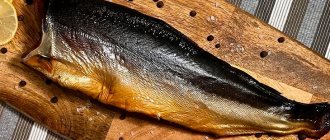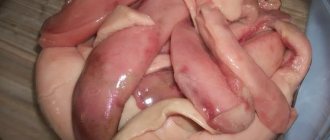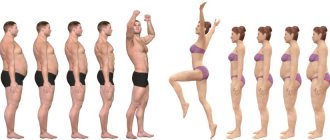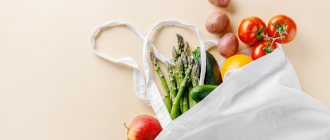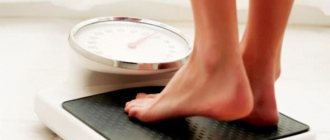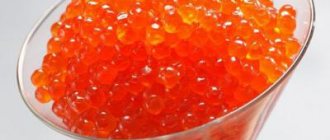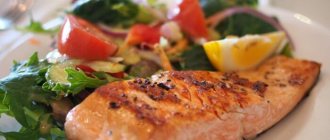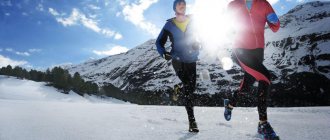A few words about pink salmon and meat quality
This fish gained its popularity due to its delicious taste, which is appreciated by gourmets from all over the world. But, in addition, it contains a significant amount of elements, vitamins, and minerals that are most beneficial for the body.
But first, let's start with its origins. The name is based on the front hump, a special outgrowth that protrudes from the body of the fish during the pre-spawning period. Some researchers believe that the purpose of this outgrowth is to drive away other males.
This fish does not have a long life span, as it lives only two years. It lives in the oceans, and enters the river only before spawning. Due to the short life cycle, pink salmon does not reach large sizes or body weight. As a rule, she gains no more than 1.5-2 kilograms. But in terms of its numbers, this representative of salmon is the most widespread. Plus, the quality of its meat and its nutritional value are no worse than that of salmon.
The unique taste for which boiled, baked, fried, and especially smoked pink salmon is famous, has ensured its enormous popularity in the food industry and catering. Canned fish is popular; various vegetables are also baked with it.
Salted and dried pink salmon is endowed with truly gastronomic value. It is consumed and digested easily by people of all ages, because the calorie content of pink salmon is only 140 kcal per 100 grams of its meat.
Recipe Salted pink salmon with butter. Calorie, chemical composition and nutritional value.
Nutritional value and chemical composition of “Salted pink salmon with butter.”
The table shows the nutritional content (calories, proteins, fats, carbohydrates, vitamins and minerals) per 100 grams of edible portion.
| Nutrient | Quantity | Norm** | % of the norm in 100 g | % of the norm in 100 kcal | 100% normal |
| Calorie content | 240 kcal | 1684 kcal | 14.3% | 6% | 702 g |
| Squirrels | 14.9 g | 76 g | 19.6% | 8.2% | 510 g |
| Fats | 19.7 g | 56 g | 35.2% | 14.7% | 284 g |
| Carbohydrates | 0.8 g | 219 g | 0.4% | 0.2% | 27375 g |
| Alimentary fiber | 0.3 g | 20 g | 1.5% | 0.6% | 6667 g |
| Water | 60.4 g | 2273 g | 2.7% | 1.1% | 3763 g |
| Ash | 3.831 g | ~ | |||
| Vitamins | |||||
| Vitamin A, RE | 21.5 mcg | 900 mcg | 2.4% | 1% | 4186 g |
| Retinol | 0.022 mg | ~ | |||
| Vitamin B1, thiamine | 0.149 mg | 1.5 mg | 9.9% | 4.1% | 1007 g |
| Vitamin B2, riboflavin | 0.117 mg | 1.8 mg | 6.5% | 2.7% | 1538 g |
| Vitamin B4, choline | 68.57 mg | 500 mg | 13.7% | 5.7% | 729 g |
| Vitamin B5, pantothenic | 0.549 mg | 5 mg | 11% | 4.6% | 911 g |
| Vitamin B6, pyridoxine | 0.451 mg | 2 mg | 22.6% | 9.4% | 443 g |
| Vitamin B9, folates | 5.951 mcg | 400 mcg | 1.5% | 0.6% | 6722 g |
| Vitamin B12, cobalamin | 2.981 mcg | 3 mcg | 99.4% | 41.4% | 101 g |
| Vitamin C, ascorbic acid | 1.57 mg | 90 mg | 1.7% | 0.7% | 5732 g |
| Vitamin D, calciferol | 7.828 mcg | 10 mcg | 78.3% | 32.6% | 128 g |
| Vitamin E, alpha tocopherol, TE | 9.374 mg | 15 mg | 62.5% | 26% | 160 g |
| Vitamin H, biotin | 0.092 mcg | 50 mcg | 0.2% | 0.1% | 54348 g |
| Vitamin K, phylloquinone | 1.1 mcg | 120 mcg | 0.9% | 0.4% | 10909 g |
| Vitamin RR, NE | 5.8687 mg | 20 mg | 29.3% | 12.2% | 341 g |
| Niacin | 3.252 mg | ~ | |||
| Macronutrients | |||||
| Potassium, K | 258.81 mg | 2500 mg | 10.4% | 4.3% | 966 g |
| Calcium, Ca | 28.12 mg | 1000 mg | 2.8% | 1.2% | 3556 g |
| Silicon, Si | 0.513 mg | 30 mg | 1.7% | 0.7% | 5848 g |
| Magnesium, Mg | 23.61 mg | 400 mg | 5.9% | 2.5% | 1694 g |
| Sodium, Na | 1162.74 mg | 1300 mg | 89.4% | 37.3% | 112 g |
| Sera, S | 148.3 mg | 1000 mg | 14.8% | 6.2% | 674 g |
| Phosphorus, P | 151.7 mg | 800 mg | 19% | 7.9% | 527 g |
| Chlorine, Cl | 1835.83 mg | 2300 mg | 79.8% | 33.3% | 125 g |
| Microelements | |||||
| Aluminium, Al | 41 mcg | ~ | |||
| Bor, B | 20.5 mcg | ~ | |||
| Iron, Fe | 0.596 mg | 18 mg | 3.3% | 1.4% | 3020 g |
| Yod, I | 36.22 mcg | 150 mcg | 24.1% | 10% | 414 g |
| Cobalt, Co | 15.308 mcg | 10 mcg | 153.1% | 63.8% | 65 g |
| Manganese, Mn | 0.0667 mg | 2 mg | 3.3% | 1.4% | 2999 g |
| Copper, Cu | 95.51 mcg | 1000 mcg | 9.6% | 4% | 1047 g |
| Molybdenum, Mo | 6.033 mcg | 70 mcg | 8.6% | 3.6% | 1160 g |
| Nickel, Ni | 4.617 mcg | ~ | |||
| Rubidium, Rb | 48.8 mcg | ~ | |||
| Selenium, Se | 32.086 mcg | 55 mcg | 58.3% | 24.3% | 171 g |
| Fluorine, F | 312.06 mcg | 4000 mcg | 7.8% | 3.3% | 1282 g |
| Chromium, Cr | 39.71 mcg | 50 mcg | 79.4% | 33.1% | 126 g |
| Zinc, Zn | 0.6072 mg | 12 mg | 5.1% | 2.1% | 1976 |
| Digestible carbohydrates | |||||
| Starch and dextrins | 0.01 g | ~ | |||
| Mono- and disaccharides (sugars) | 0.8 g | max 100 g | |||
| Glucose (dextrose) | 0.133 g | ~ | |||
| Sucrose | 0.667 g | ~ | |||
| Fructose | 0.123 g | ~ | |||
| Essential amino acids | 0.029 g | ~ | |||
| Arginine* | 0.785 g | ~ | |||
| Valin | 0.886 g | ~ | |||
| Histidine* | 0.633 g | ~ | |||
| Isoleucine | 0.679 g | ~ | |||
| Leucine | 1.233 g | ~ | |||
| Lysine | 1.457 g | ~ | |||
| Methionine | 0.396 g | ~ | |||
| Methionine + Cysteine | 0.584 g | ~ | |||
| Threonine | 0.816 g | ~ | |||
| Tryptophan | 0.16 g | ~ | |||
| Phenylalanine | 0.694 g | ~ | |||
| Phenylalanine+Tyrosine | 1.041 g | ~ | |||
| Nonessential amino acids | 0.068 g | ~ | |||
| Alanin | 0.961 g | ~ | |||
| Aspartic acid | 1.781 g | ~ | |||
| Glycine | 0.959 g | ~ | |||
| Glutamic acid | 2.034 g | ~ | |||
| Proline | 0.52 g | ~ | |||
| Serin | 0.664 g | ~ | |||
| Tyrosine | 0.348 g | ~ | |||
| Cysteine | 0.188 g | ~ | |||
| Sterols (sterols) | |||||
| Cholesterol | 43.09 mg | max 300 mg | |||
| Saturated fatty acids | |||||
| Saturated fatty acids | 0.8 g | max 18.7 g | |||
| 14:0 Miristinovaya | 0.144 g | ~ | |||
| 16:0 Palmitinaya | 0.812 g | ~ | |||
| 17:0 Margarine | 0.086 g | ~ | |||
| 18:0 Stearic | 0.826 g | ~ | |||
| 20:0 Arakhinovaya | 0.022 g | ~ | |||
| Monounsaturated fatty acids | 4.86 g | min 16.8 g | 28.9% | 12% | |
| 16:1 Palmitoleic | 0.431 g | ~ | |||
| 17:1 Heptadecene | 0.043 g | ~ | |||
| 18:1 Oleic (omega-9) | 0.682 g | ~ | |||
| 20:1 Gadoleic (omega-9) | 0.122 g | ~ | |||
| Polyunsaturated fatty acids | 10.55 g | from 11.2 to 20.6 g | 94.2% | 39.3% | |
| 18:2 Linolevaya | 0.101 g | ~ | |||
| 18:3 Linolenic | 0.043 g | ~ | |||
| 20:4 Arachidonic | 0.309 g | ~ | |||
| 20:5 Eicosapentaenoic acid (EPA), Omega-3 | 1.099 g | ~ | |||
| Omega-3 fatty acids | 1.2 g | from 0.9 to 3.7 g | 100% | 41.7% | |
| Omega-6 fatty acids | 9.4 g | from 4.7 to 16.8 g | 100% | 41.7% |
The energy value of salted pink salmon with oil is 240 kcal.
Primary Source: Created in the application by the user. Read more.
** This table shows the average levels of vitamins and minerals for an adult. If you want to know the norms taking into account your gender, age and other factors, then use the “My Healthy Diet” application.
Salting fish at home
How to prepare delicious salted pink salmon? The technology is not at all complex, and the result is a snack that serves as an excellent basis for sandwiches. In principle, any fish can be salted using this procedure. But it is salted pink salmon that is good because it is not fatty, unlike salmon.
So:
- wash the carcass thoroughly;
- we will cut off the head and clean out the insides, if necessary;
- Using a sharp knife, remove small bones from the meat;
- It is better to salt it in large pieces, separating the fillet from the skin. One whole carcass produces 4 large fish pieces;
- Take a deep bowl or pan and put a piece sprinkled with salt and sugar. All other pieces are laid out in this manner, thoroughly salted;
- Place a weight on top to form brine. The container with the fish is placed in the refrigerator, and after 12 hours the salted pink salmon is ready for consumption.
Complicating the technology
The calorie content of salted pink salmon will be approximately the same as that of fresh fish. In a roughly similar, but slightly more complex way, tender and aromatic salted fish is prepared in a marinade. In addition to pink salmon carcasses, you will need to stock up on bay leaves, lemon juice, salt, cloves, and vegetable oil. The meat is cut into large pieces or strips and placed in a marinade container.
To give the salted pink salmon an original taste, we sprinkle the pieces with lemon juice. Now pour vegetable oil on top so that all the pieces are oiled.
Now add chopped bay leaf, salt, a little cloves and pepper to the fish. Cover the container with a lid, shake well and infuse for 12 to 24 hours in a cool place.
Cooking in the oven with vegetables
Not just fried or boiled pink salmon deserves special attention, but also baked in the oven with potatoes. 6 large potatoes, washed, peeled and cut into halves. Fill with water and set to cook in salted water. Once the potatoes are boiled, they can be cut into large rings or pieces. Next, the fish is cleaned of fins, entrails and skin, washed and cut into pieces.
To make delicious fish in the oven, we cover a baking dish with foil and place pink salmon there. Each piece is separately salted and peppered. Take 100 grams of onion, peeled and cut into small pieces. Place on top of the fish. Pour a couple of tablespoons of vegetable oil on top. Everything is covered with foil and baked in the oven at 180 degrees for 15-20 minutes.
Now we need to carefully remove our form, which was in a hot oven. Unfold the foil after it has cooled, add pieces of potatoes, and close again. Now at a temperature of 150 degrees, our dish will again finish in the oven for another 10-15 minutes. A few minutes before cooking, open the foil so that the potatoes dry out and get a crust. It is recommended to sprinkle the finished dish with fresh herbs.
Other ways to cook pink salmon at home
Boiled pink salmon or cooked in the oven is considered the healthiest, because it retains most of its composition during such processing. It is best to prefer the “steamed” cooking method. The calorie content of pink salmon in this case will be approximately 168 kilocalories. Take 350 grams of fresh fish and sprinkle it with a little oil. Let's prepare a slow cooker in which the fish will cook for about 10 minutes. Then it is seasoned as desired and served on lettuce leaves, sprinkled with lemon juice.
Similarly, canned pink salmon is popular in our country, its calorie content is 136 kcal. The healthiest option is fish cooked in its own juices, not in oil. For example, a popular salad called Mimosa, which also contains canned pink salmon. It is often added to soups and other first courses. The same fish is used for cold and hot smoking.
For this, special equipment is used, the simplest of which can be installed even in the yard of your own home. To smoke at home, the fish is wrapped in a layer of gauze so that its tender meat does not crumble. At home, smoked pink salmon is most often prepared using the hot method. This will only take a few hours, unlike the cold production method.
Hot and cold smoked pink salmon
Smoking allows you to increase the shelf life of products. Pink salmon also lends itself well to this type of processing.
Before smoking, the fish are pre-marinated. It is necessary to keep the fish in salted brine for about 12 hours. After which you can begin heat treatment.
It is easier to prepare hot smoked pink salmon at home; this procedure lasts about an hour. With this type of processing, the fish turns out juicy and tender. As a result of hot smoking, a large amount of liquid and nutrients remains in the fish.
After hot smoking, the calorie content of 100 grams of pink salmon will be 161 kcal.
The cold smoking process takes longer. Depending on the recipe used and the temperature of the smoke, pink salmon can be smoked for up to four days . During this time, more moisture is removed from the product. As a result, its calorie content increases significantly.
The energy value of pink salmon prepared by cold smoking reaches 283 kcal.
When cold smoking fish, it is important to choose the right sawdust for your smoker . The smoke penetrates the tender pink salmon meat, giving it a unique taste.
It is best to use wood from fruit trees or alder for this purpose. The use of sawdust from coniferous trees is not recommended, as they contain a high resin content.
Smoked fish is also useful for consumption, but as a result of heat treatment, some of the beneficial properties are lost. Eating fish prepared in this way is not recommended for people who have problems with the stomach and other digestive organs.
